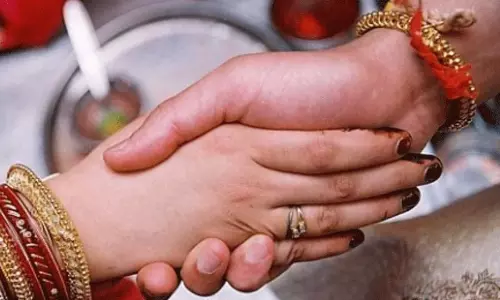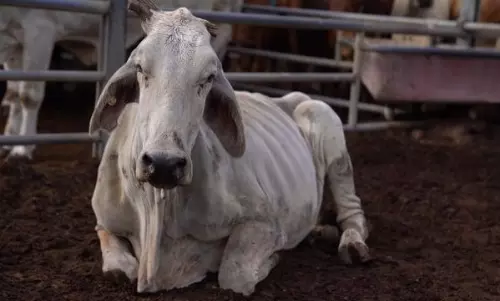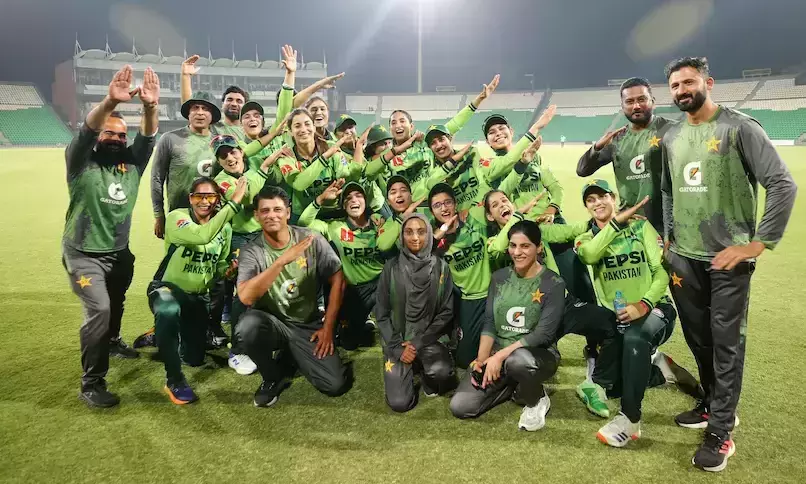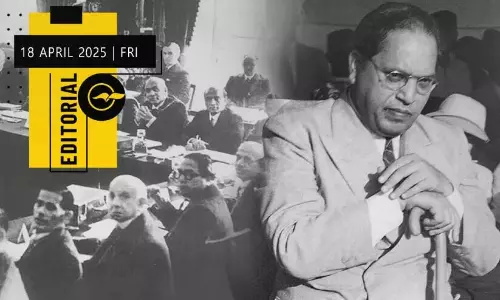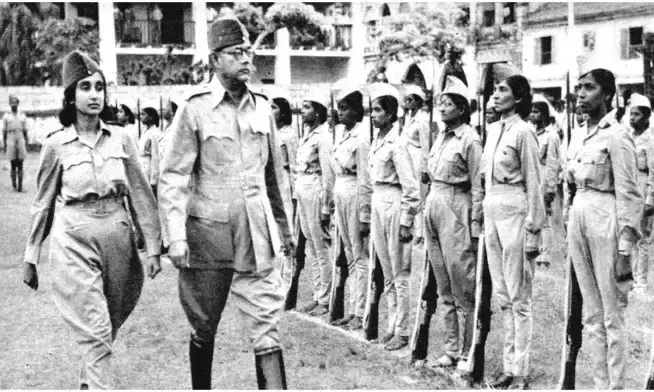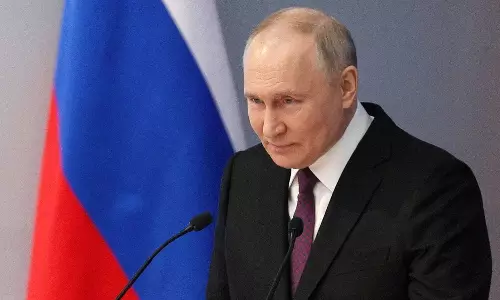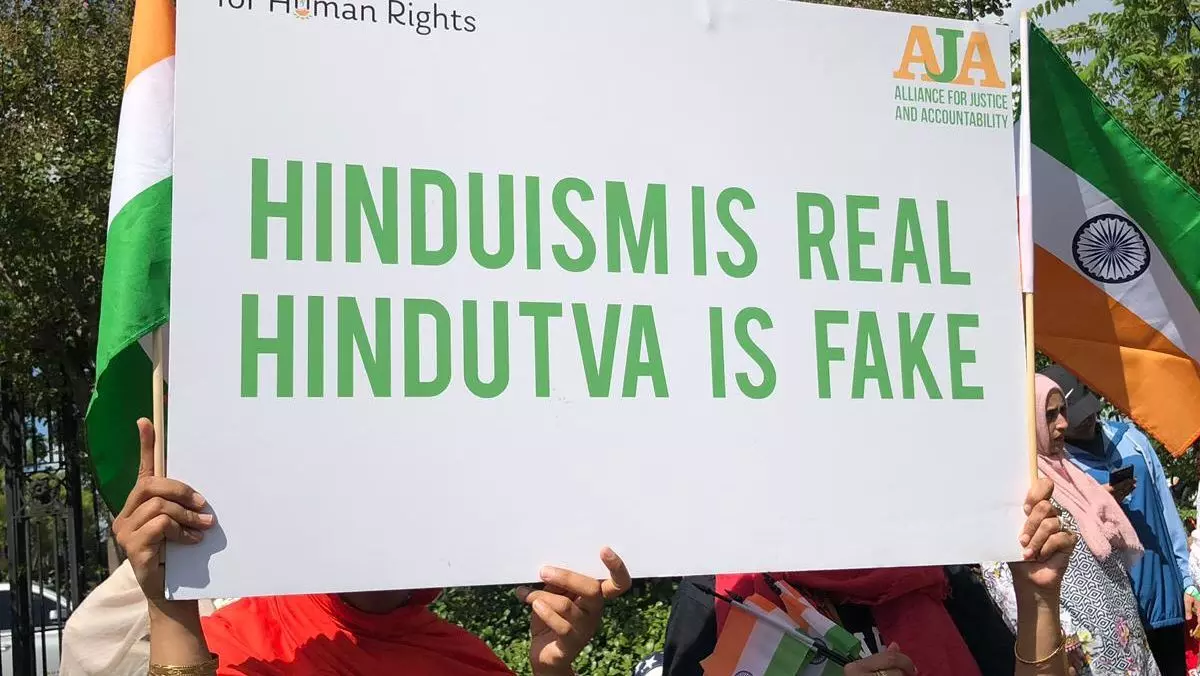
Did Modi betray Ram and embrace 'Babur ke aulad'?
text_fieldsLynchings suspended temporarily:
In India, the dates and phases of elections to the five states – namely Uttar Pradesh, Punjab, Uttarakhand, Goa and Manipur – have been declared. The performance art that is otherwise popular all around the year in the country has been suspended. Yes, India's national street art of lynching has been put on hold in view of the elections.
Mob lynching has been set to perfection against Indian Muslims in New India. The minority community members ("Babur ke aulad") are dehumanized and meted out second-class treatment, as they are deemed as laying dubious claims to Indian citizenship. The men among "Babur ke aulad" are dubbed terrorists and rapists, and women traded on fake online platforms. Reduced to being lesser humans amongst robust Indian citizens, Muslims have been easy targets of mob lynching in the Modi era. However, when it's election season, all street lynchings stop magically.
Kochi-based artist Anil Dayanand says that performance art is an art form created by an artist and executed equally by impromptu modes of reaction and self-expression by strangers and passersby to what they see enacted in front of their eyes. Performance art can feature in any crowded place and does not require a stage or costumes or lightings or props – not even a prepared script. Street lynchings in Modi's India, Anil says, are perfect illustrations of performance art. Participants who are mere passersby react unwittingly to what he or she sees taking place before their eyes in a mood of complete abandon, confidence and trust. The effect of the heightened energy that is released in the time and space coordinates, wherever the lynching takes place, is stupendous and leaves everybody zapped. The participants in the national art of lynching, who are drawn from any paltry crowd, give vent to their own frustrations of being powerless in other fields of life. They give vent to their pent-up frustrations and animosities in line with their indoctrinations and momentary empowerment over the utter powerlessness of the victim, who has been dehumanised in the national discourse.
Term Muslim 'genocide' floated in popular consciousness:
Though it might have been made clear to the party rank and file to rein in lynching till elections are over, Hindutva as an ideology was raised to its next level in India. By 2021 end, Muslim "genocide" as an idea was effectively unleashed into "democratic" India's popular consciousness. Lusty cries for a Muslim genocide rent the air at the three-day Haridwar Dharam Sansad that took place from December 17 to 19; Hindutva seers exhorted for a safai abhiyaan (ethnic cleansing), urging Hindus to take up weapons against Muslims. Sadhvi Annapoorna Bharti broke it down to numbers: "If 100 of us are ready to kill 20 lakhs of them……"
Duties over rights: Modi in the mood to elect a new people?
The PM, as usual, remained unresponsive and non-chalant without making a statement against the Haridwar Dharam Sansad even as civil society outraged at the call to arms.
India no longer remains a beacon of democracy in the world; neither does it have any concept of justice, equal rights of citizens etc. A week before this year's Republic Day, Prime Minister Modi stressed that the Indian people's sense of their fundamental rights weakened the country. Indians should, on the contrary, focus on their duties and responsibilities. It almost seemed as if the PM was in a mood to lay the blame of the country's lack of progress at the people's own feet.
To borrow Bertolt Brecht's lines from his poem 'The Solution' for this context would be apt:
"………………………………the people
Had forfeited the confidence of the government (read Hindutva government)
And could win it back only by redoubled efforts.
Would it not be easier
In that case for the government
To dissolve the people
And elect another?"
Did the PM indeed wish for a more pliant people, who wouldn't demand their rights? Wasn't Mr Modi suggesting that democracy, which made the people articulate their concerns and fight for their rights, was indeed a cumbersome project?
Republic Day 2022: Ominous undertones
The way the government ran roughshod over this year's Republic Day traditions by snuffing out the Amar Jawan Jyoti at India Gate (merging it with the flame at the recently built National War Memorial) and taking out Gandhiji's favourite hymn 'Abide With Me' from the Beating the Retreat ceremony, carried ominous undertones of dragging the country away from its democratic moorings and sense of history. Not to forget the national uproar when the government went dangerously close to the idea of the country's premium Navy band performing to the popular number 'Monica My Darling' on the solemn occasion of the Republic Day parade this year. It was a Freudian slip made by the government in full view – Helen, portraying a country thrown off its democratic moorings, and dancing to the tune of the one and only Piya. This year's Republic Day ended up as a tableau of Hindutva pride and hubris in a nation still touted as a democracy in global fora.
As right-wing parties across the world are trying to bring in Hitler and his fascist ideology into the national discourse in their respective countries, PM Modi inaugurated the hologram of Netaji Subhash Chandra Bose in New Delhi. The honouring of Netaji was done with a view to establish respectability for RSS's fascist ideology in the minds of the masses. But history is not a pawn in the hands of the Rashtriya Swayamsevak Sangh. Neither are Indians a pliant people.
Our pantheon of freedom fighters does not offer themselves to reductionist interpretations. Even the father of the nation is subject to critical scrutiny by a questioning people. Netaji can be defined as a lover of India's freedom; not as a lover of Hitler's ideology. Netaji's tryst with Hitler was to examine possibilities to use the power of the formidable Axis power, Germany, to show the British the door. Subsequent writings and clarifications on Netaji made by historians and the research done by civil society and social media activists establish the fact that Netaji cannot be a poster boy for fascist ideologies of any kind. Statements given by Netaji's daughter Anita Bose and grand-nephew Sugata Bose revealed that there could not have been a more secular person than Netaji and his real legacy lies in his sincere sentiments of liberty, equality and fraternity towards all communities residing in India, in the truest sense of these terms.
Betraying Lord Ram: Engaging with 'Babur ke Aulad'
In India, however, the RSS interweaves myth and history to establish a convenient narrative for the consumption of the mobs. The mythology of Lord Ram is pitted against the medieval history of Babur, ie, a mythological personality is pitted against a historic personality. It is like comparing apples and oranges. However, the RSS's political narrative of the Mughal invasion of India keeps alive the ancient tribal passions of the irrational masses against the Muslims.
But by this logic, didn't Modi prove himself to be a clear renegade and betrayer of the cause of Ram and of Hindu pride last week when he embraced "Babur ke aulad" and has pledged deeper engagement in future with "Babur ke aulad"? By doing this, didn't he go against the very Hindutva narrative based on which he hopes to keep India under his control and turn it into a dictatorship by 2024 and to bring in the Bhagwa Constitution?
Last week, Prime Minister Modi made trade and security pacts with "Babur ke aulad". The offsprings of India's greatest enemy Babur, who lived in the 16th century, around whom the entire edifice of the Hindutva narrative on Ayodhya, Babri Masjid and Ram Rajya stands, kicked up by LK Advani's Rath Yatra from 30 years ago, was in fact embraced by the Hindu Hriday Samrat Prime Minister Modi last week when he signed treaties for stronger ties with five Central Asian countries of Uzbekistan, Kazakhstan, Turkmenistan, Kyrgistan and Tajikistan.
Babur (Wikipedia gives his birth date as Valentine's Day, 1483), the founder and first emperor of the Mughal dynasty in India, was born in the Fergana Valley of present-day Uzbekistan in Central Asia.
The entire Central Asian region celebrates Babur as their national hero for spreading his empire till the far-off Indian subcontinent.
In my recent visit to Uzbekistan, I was asked lovingly by a local Uzbek matriarch, all resplendent in Eid fineries, whether I belonged to India. She asked me "Are you the grandchildren of our Babur?" "Are you Baabar ke aulad?" I shuddered inside.
A matriarch from Uzbekistan, sitting in her geography, enfolds India in her embrace. I am sure if she knew about Modi's recent treaties with the Central Asian republics, the cradle of the Mughal civilization in far-away India, she would rejoice at this gesture of great love and cooperation initiated by "Babur ke aulad", the Prime Minister of India.
Hey Ram!
(Leena Mariam Koshy is an independent writer based in Kozhikode, Kerala. Views expressed here are personal and Madhyamam assumes no responsibility for the content in this article)




